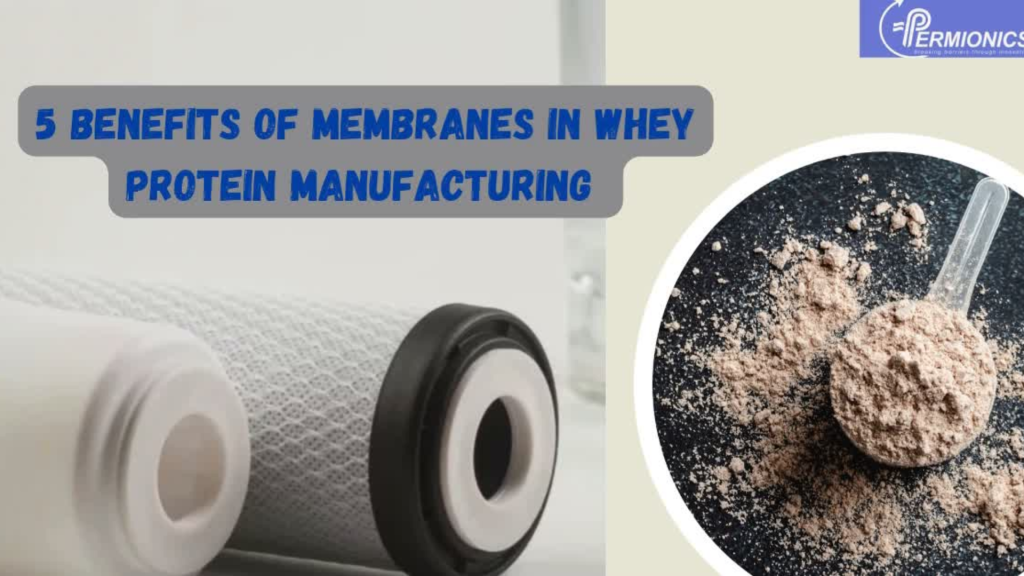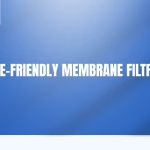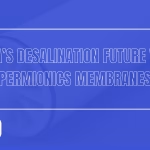Whey protein is a by-product that is obtained from milk during the cheese-making process.
Firstly, fresh milk is collected and pasteurized to kill bacteria. Then, acids like vinegar or lemon are added to milk to separate it into two parts: curd and whey.
While the curd is used for making cheese, whey is obtained to convert it into whey protein.
Whey protein has several benefits as it is packed with amino acids. It is used by athletes and fitness freaks as a protein supplement for muscle buildup.
Membrane filtration technology is used in whey protein manufacturing. It utilizes different filtration processes like microfiltration, ultrafiltration, and nanofiltration to enhance the purity and quality of the final product.
It’s just an overview of how whey protein is made. Continue reading the blog to understand how membrane filtration is utilized in whey protein manufacturing.
Enhanced Protein Purity with Microfiltration
Microfiltration (MF) is an effective technique for enhancing the purity of whey protein by selectively removing undesirable components such as fat, bacteria, and large particles. This process significantly improves the quality of whey protein, making it more suitable for various applications in the food and nutrition industries.
How Microfiltration Works
Microfiltration utilizes semi-permeable membranes with pore sizes typically ranging from 0.1 to 10 micrometers. Here’s how it functions:
- Separation Process: As whey passes through the microfiltration membrane, larger particles, including fat globules, bacteria, and other macromolecules, are retained on the membrane surface while the smaller protein molecules and water permeate through.
- Retention of Nutrients: The process allows for the retention of valuable components such as whey proteins (e.g., β-lactoglobulin and α-lactalbumin) while effectively removing larger contaminants. This results in a concentrate that is richer in protein content.
- No Heat Required: Unlike thermal processes, microfiltration operates at low temperatures, preserving the native structure of proteins and sensitive bioactive compounds that might be denatured by heat.
Impact on Whey Protein Purity and Quality
- Increased Protein Concentration: By removing fats and other unwanted substances, microfiltration can produce whey protein concentrates with protein levels exceeding 90%, enhancing the nutritional value.
- Improved Functional Properties: The enhanced purity leads to better solubility, emulsification, and foaming properties, which are crucial for food formulation. This makes the protein more versatile for applications in sports nutrition, dairy products, and protein supplements.
- Reduction of Off-Flavors and Odors: Microfiltration helps eliminate lipolytic enzymes and other compounds responsible for undesirable flavors, resulting in a cleaner taste profile in the final product.
- Safety and Shelf Life: By effectively removing bacteria and other microorganisms, microfiltration contributes to improved food safety and extends the shelf life of whey protein products.
- Preservation of Bioactive Components: The low-temperature nature of microfiltration helps retain bioactive peptides that have beneficial health effects, making the protein not only a source of amino acids but also functional ingredients.
Optimized Nutrient Retention through Ultrafiltration
Ultrafiltration (UF) is a membrane separation technique that effectively concentrates and purifies proteins while retaining essential nutrients. This method is especially valuable for producing high-quality whey protein and other dairy products.
Comparison of Ultrafiltration and Conventional Methods
| Feature | Ultrafiltration | Conventional Methods |
| Separation Mechanism | Membrane filtration based on size exclusion | Heat treatment, acidification, or precipitation |
| Protein Retention | High (90%+) | Variable (often lower, depending on method) |
| Amino Acid Preservation | Excellent; minimal denaturation | Often reduced due to heat or chemical processes |
| Fat Removal | Effective, resulting in low-fat products | Variable; may require additional steps for fat removal |
| Operational Efficiency | Continuous process with lower energy consumption | Batch processes can be less efficient. |
Cost-Effectiveness and Energy Efficiency in Whey Protein Processing
Reverse osmosis (RO) plays a crucial role in the whey protein processing industry by efficiently reducing water content. This concentration of proteins minimizes the volume that requires further processing, which leads to significant energy savings. RO operates at lower pressures compared to traditional thermal methods, allowing for reduced energy consumption during the processing stage.
Cost Savings in Whey Processing
Reduced Energy Consumption
The use of membrane filtration technology, such as RO, leads to lower operational costs. By minimizing the need for energy-intensive heating and cooling processes, which are common in conventional methods, the overall energy expenditure in whey processing is significantly decreased.
Waste Minimization
The ultrafiltration process, combined with RO, generates less wastewater compared to traditional techniques. This reduction in wastewater not only lowers disposal costs but also decreases the environmental impact of processing operations, contributing to more sustainable practices in the industry.
Streamlined Production
The integration of the microfiltration process allows for faster and more efficient protein separation, resulting in quicker turnaround times. Improved yield and product quality enhance the competitiveness of whey protein products in the market, making them more appealing to consumers.
Versatility with Nanofiltration for Product Development
Nanofiltration (NF) is an advanced membrane filtration process that operates between ultrafiltration and reverse osmosis. It effectively separates molecules in the range of 1-10 nanometers, allowing for selective removal of minerals, lactose, and other small solutes while retaining larger proteins. This versatility makes it particularly valuable in the dairy industry, especially for the development of various whey protein products.
Control of Mineral Content in Whey Protein
Nanofiltration (NF) is a membrane filtration technique that offers precise control over the mineral content in whey protein. By using membranes with specific pore sizes, nanofiltration effectively retains larger molecules while allowing smaller ions, such as calcium and magnesium, to pass through. This ability to selectively remove or concentrate minerals is crucial for achieving desired nutritional profiles in whey protein products. Adjusting the mineral content can enhance solubility, flavor, and overall functionality, making it easier to tailor products to meet specific dietary requirements or consumer preferences.
Flexibility in Creating Different Whey Protein Types
Nanofiltration provides significant flexibility in developing various whey protein types, including whey protein concentrate (WPC) and whey protein isolate (WPI).
Whey Protein Concentrate (WPC) nanofiltration can concentrate protein levels while retaining some lactose and fat, resulting in a product that is rich in flavor and nutrients. This makes WPC ideal for applications in sports nutrition, functional foods and beverages.
Whey Protein Isolate (WPI) nanofiltration allows for the removal of more lactose and fat, achieving a higher protein purity level. This versatility enables manufacturers to create high-quality WPI that caters to health-conscious consumers seeking low-calorie and low-fat options.
Environmentally Sustainable Whey Protein Production
Membrane filtration technologies, such as microfiltration, ultrafiltration, and nanofiltration, play a vital role in promoting environmentally sustainable whey protein production. These processes significantly reduce water usage by efficiently separating components without the need for extensive heating or chemical treatments. As a result, less wastewater is generated, minimizing the environmental footprint of whey processing. Additionally, membrane filtration enables the recovery of valuable by-products, such as lactose and whey permeate, which can be utilized in other applications, further reducing waste.
Comparison of Environmentally Friendly Whey Production with Traditional Methods
| Feature | Environmentally Friendly Whey Production | Traditional Methods |
| Water Usage | Significantly reduced through membrane filtration. | High water usage for processing and cleaning. |
| Water Generation | Minimal waste due to efficient separation processes. | Higher waste levels due to chemical treatments and heat. |
| Energy Consumption | Lower energy needs from efficient operations. | Higher energy consumption from thermal processes. |
| By-Product Recovery | Effective recovery of valuable by-products. | Limited recovery options, often leading to waste. |
| Chemical Usage | Minimal or no chemicals are required. | Often relies on chemical additives for processing. |
The Bottom Line
The adoption of membrane filtration techniques such as microfiltration, ultrafiltration, nanofiltration, and reverse osmosis offers numerous key benefits for whey protein production. These technologies enhance protein purity by effectively removing unwanted components, optimize nutrient retention to preserve essential amino acids and bioactive compounds, and contribute to significant cost savings through reduced energy consumption and waste generation.






